
Borneo
The island of Borneo is one of the largest islands in Southeast Asia. In fact, it is the third largest island in the world. Borneo has the distinction of being the only island in the world that is shared by three countries: Malaysia, Indonesia, and Brunei. The Malaysian part of the island contains two states, called Sabah and Sarawak. The Indonesian part of Borneo, which is also the largest part of the island, is known as Kalimantan and is composed of five provinces. Today, Borneo is well-known for its rainforests, its multiethnic population, and its abundant natural resources, which are unfortunately being exploited at the expense of the island’s natural environment.
Where Is Borneo?

Borneo is located in Southeast Asia, in the Indonesian archipelago. To its north is the South China Sea. The Philippines is situated northeast of Borneo, across the Sulu Sea. The Java Sea is located to the island’s south. Across the Java Sea is the island of Java and the Lesser Sunda Islands. East of Borneo, across the Makassar Strait is the island of Sulawesi. The Celebes Sea is also situated east of Borneo. To Borneo’s west are the island of Sumatra, the Malay Peninsula, and the Riau Archipelago.
Geography
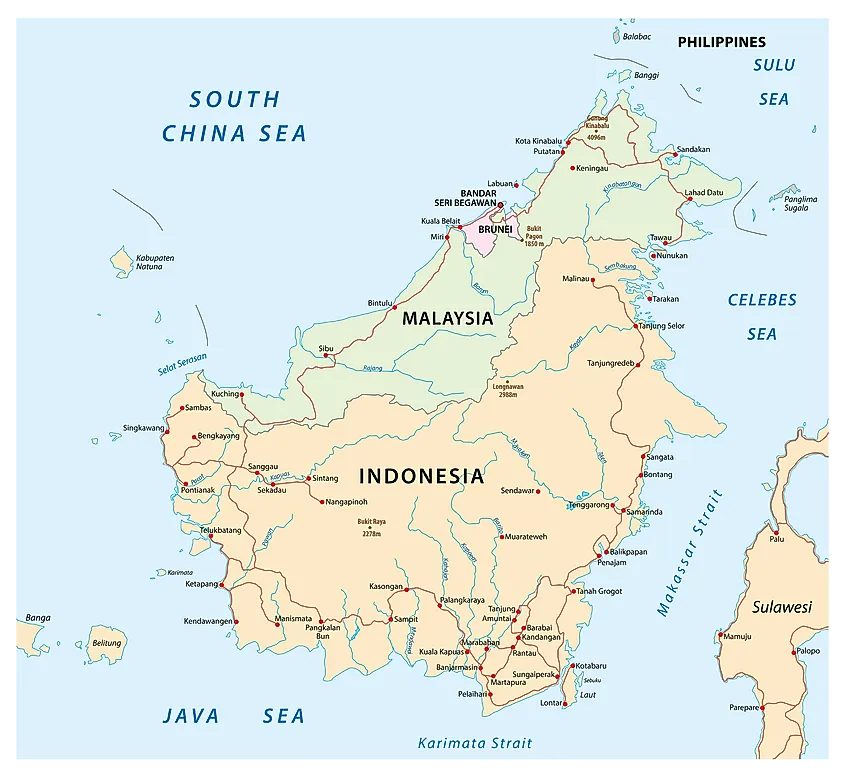
Borneo is the world’s third-largest island. Only Greenland and New Guinea are larger. Its land area is approximately 743,330 sq. km. The southern two thirds of the island is controlled by Indonesia and is known as Kalimantan, which translates as “diamond river”. Two of Malaysia’s states, Sabah (“the land below the wind”) and Sarawak (“antimony”), are situated on the northern coast of Borneo, as is the small Sultanate of Brunei.
Borneo has one significant mountain range, which runs from the southwest to the northeast. The mountainous areas of the island are located mostly in the interior. Land elevations on the island are lowest in the south, rarely surpassing a height of 1,200 meters. Further to the north, near the Indonesian-Malaysian border, however, elevations are much higher, and can reach more than 2,400 meters. Among the mountains of Borneo is the tallest mountain in Southeast Asia, Mt. Kinabalu, which reaches a height of 4,095 meters.
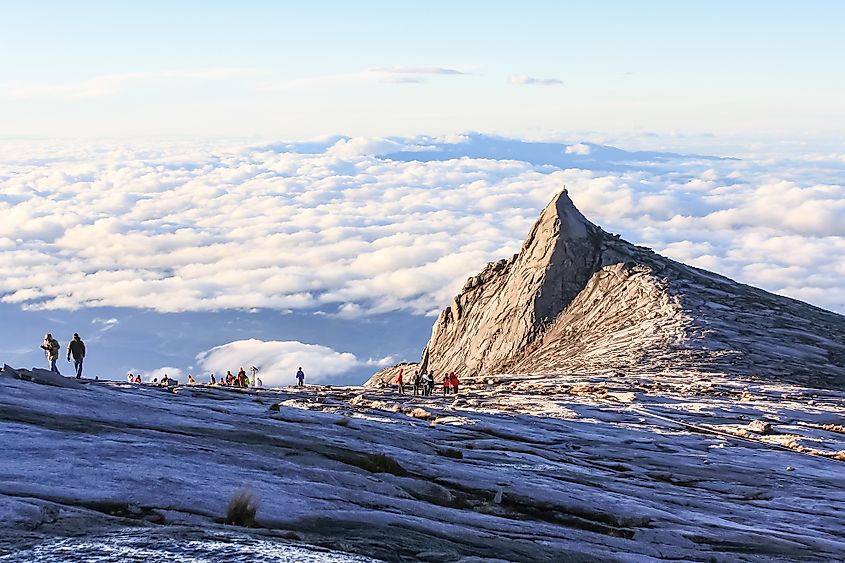
Borneo was once covered in rainforests, but this began to change in the 1980s and 90s, as many of the forests were torn down at a rapid pace. Today, the island still contains forests, though they make up a fraction of what used to be present. Nevertheless, the forests of Borneo are still among the most biodiverse on the planet. Some of them are mangrove forests, which are situated in the island’s estuaries and coastal areas. There are also peat swamp forests, located in the lowlands of the island.
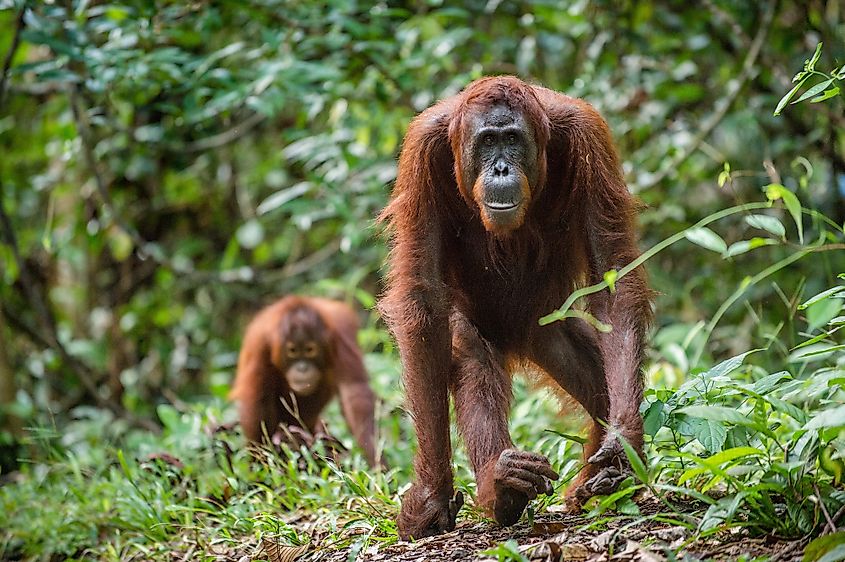
Another type of forest, called Montane forests, are mostly found at elevations between 900 and 3,300 meters. They are characterized by trees that are shorter than those found in the lowland forests. Heath forests, also called kerangas, contain tree species that can tolerate poor, acidic soil conditions, as it is nutrient-poor soil that the heath forests grow in. The most biodiverse forests on the island of Borneo are called Lowland Dipterocarp forests, which feature tall trees that can reach more than 45 meters in height.
Demographics
The island of Borneo is home to an estimated 18 million people. The interior of the island is much less populated than the coasts and floodplains of major rivers, as it is quite inaccessible. The Malaysian state of Sabah is the most densely populated jurisdiction in Borneo, though the most populous city on the island, Samarinda, is located in the East Kalimantan province of Indonesia. It has a population of 727,500 people. Other large cities on the island of Borneo include Banjarmasin, Kuching, Balikpapan, and Pontianak, all of which have populations of between 550,000 and 625,000 people.
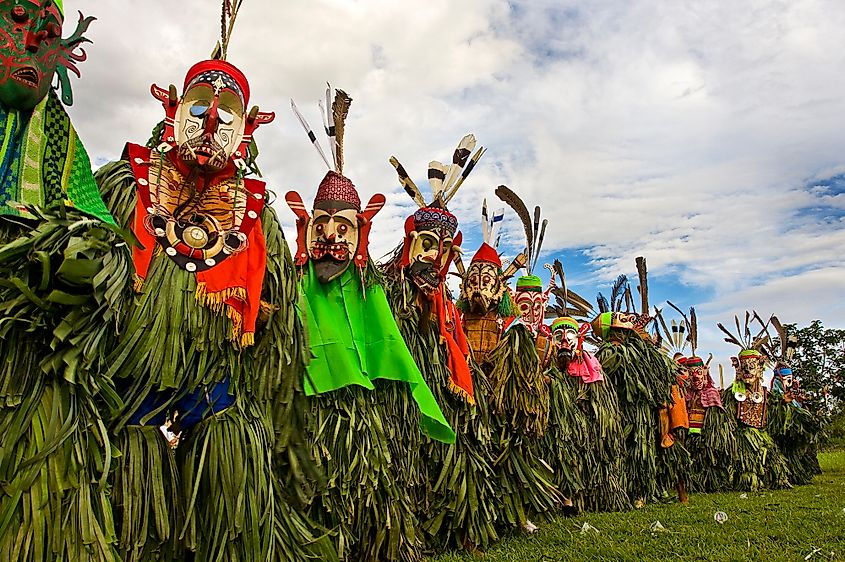
Most of the people who live in Borneo’s interior belong to a group known as the Dayaks. This is not the name of an ethnic group, however, but the name ascribed to the indigenous farming population on the island. The Dayaks are actually composed of more than 50 different ethnic groups. They were originally hunter-gatherers, who engaged in headhunting and observed animist rituals. During the period of European colonization, Dutch missionaries managed to convert many of the Dayaks to Christianity.
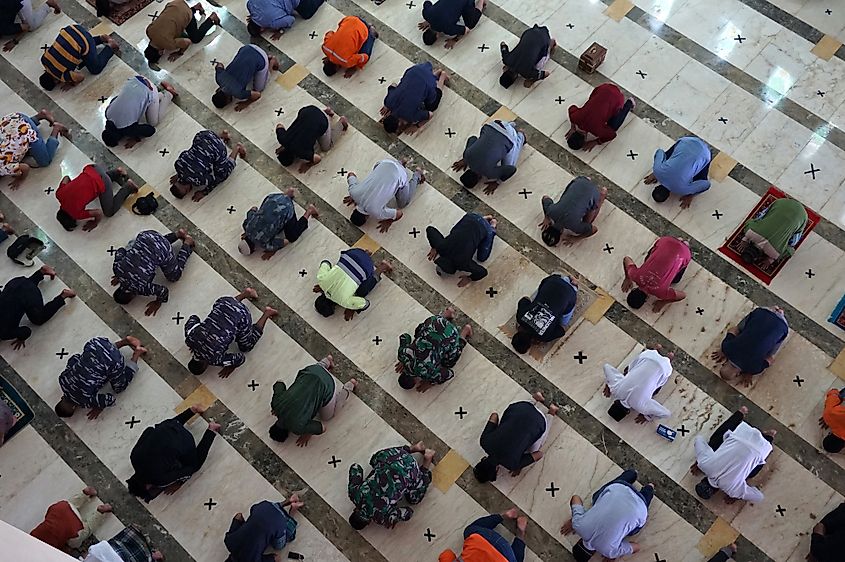
The much larger coastal population of Borneo is composed mainly of ethnic Malays who practice Islam. In fact, about two thirds of the island’s population is Muslim. It is the Malays who historically and currently have dominated Borneo both politically and militarily. Another Muslim people, the Madurese, inhabit the lowlands of Borneo. They began migrating from their native island of Madura, south of Borneo, in the 1960s. Violent clashes between the indigenous Dayak and the Muslim Malay and Madurese populations occur on occasion. In 2000-2001, there was a particularly violent period in which Dayaks slaughtered thousands of Madurese. Borneo also hosts a sizable Chinese community, many of whom live in the sultanate of Brunei, where they encompass some 15% of the population.
In terms of languages, the indigenous Dayaks speak about 140 different dialects. Malay is the main language spoken on the rest of the island. Bahasa Melayu is the Malay dialect spoken in the two Malaysian states of Sabah and Sarawak, as well as the sultanate of Brunei. Bahasa Indonesia is the Malay dialect spoken in the Indonesian part of the island. Both are mutually intelligible.
A Brief History Of Borneo
Archeological evidence points to the first human habitation of Borneo as much as 46,000 years ago. According to ancient inscriptions, the first kingdom to appear on the island was a Hindu kingdom called Kutai Martadipura, around 400 CE. In the 14th century, the Javanese Hindu Kingdom of Majapahit controlled the coastal areas of Borneo. From the 15th to 17th centuries, the whole of Borneo was controlled by the empire of Brunei. It was during this time that Europeans began to arrive on the island.
The Portuguese visited Borneo in the 16th century, followed by the British and Dutch in the 17th century. By the 1800s, the Sultanate of Brunei had shrunk to its current size. At the same time as Brunei’s power in Borneo was shrinking, Dutch influence was growing. In the 19th century, the Dutch and British concluded agreements dividing the Indonesian archipelago, including Borneo, among themselves. The southern part of Borneo was allocated to the Dutch East Indies, while the northern part was put under British control.
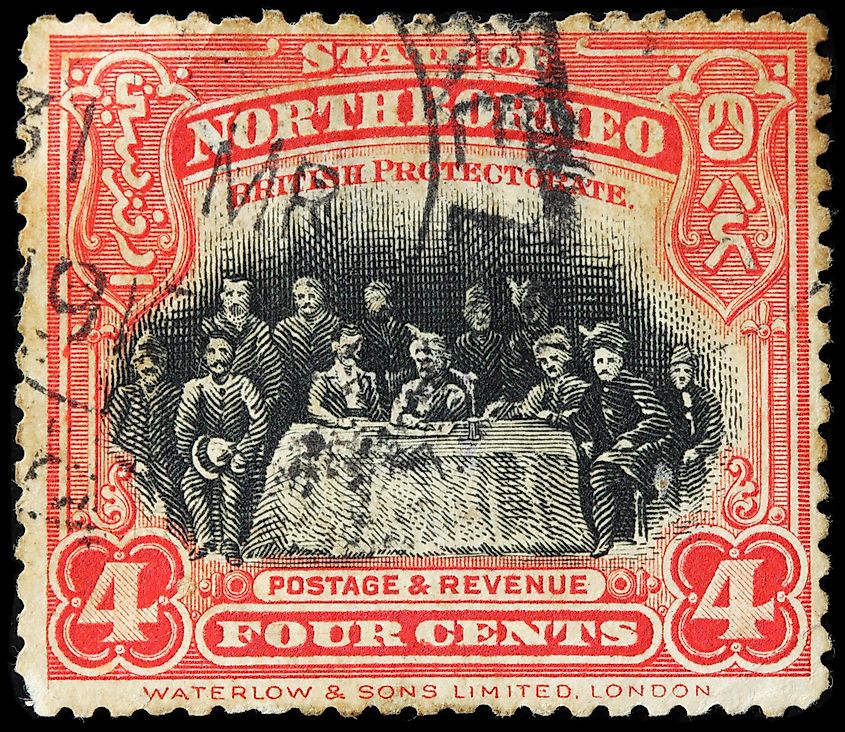
A stamp printed by the British Protectorate of North Borneo. Editorial credit: Sergey Goryachev / Shutterstock.com
In 1950, Indonesia gained independence from the Netherlands. Its territory included the southern part of the island of Borneo. The Malay Federation on the Malay Peninsula, which was under British rule, became independent in 1957. In 1963, the British colonies of Sabah and Sarawak, on the island of Borneo, joined the Malaysian federation. Brunei was also invited to join, but declined, and would remain a British protectorate until 1984, when it became independent.
Economy And Natural Resources
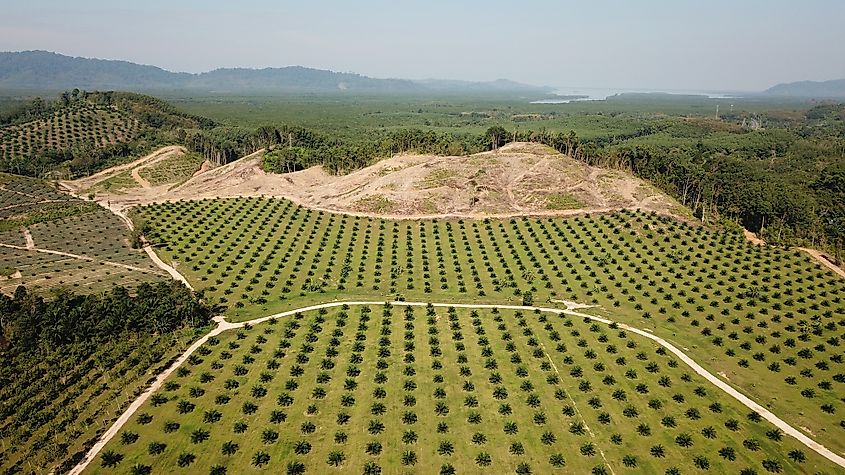
The economy of Borneo depends mainly on the island’s natural resources. It is safe to say, however, that the vast natural resources that Borneo harbors are both a blessing and a curse. For instance, agricultural activity on the island has led to rapid deforestation as forests are cleared so that the land can be used to cultivate crops. Such crops include rice, sago, tobacco, millet, coconuts, pepper, sweet potatoes, sugarcane, coffee, rubber, and palm oil. The cultivation of palm oil in particular is blamed for much of the deforestation in Borneo. Oil palm is the most productive oil seed in the world. The fact that a single hectare of oil palm can produce 5,000 kilograms of crude oil, or nearly 6,000 liters of crude, makes it very profitable to grow it on large plantations. And of course, since large plantations require large tracts of land, much of Borneo’s forests have been cleared to make way for palm oil production.
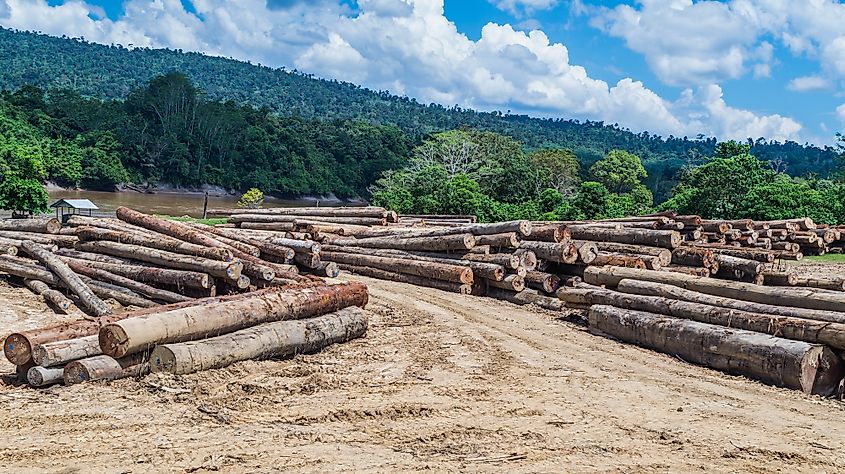
In addition, land clearing is Borneo’s forests is often done using peat fires, which can and have led to large forest fires where millions of hectares of forest have been burned. Another important industry in Borneo that contributes to deforestation on the island is logging. Borneo is one of the largest producers of the world’s tropical timber. Thus, logging has become very popular on the island. Inasmuch as the timber industry has created jobs for people in Borneo, however, it is also contributing the rapid decline of the island’s forests.
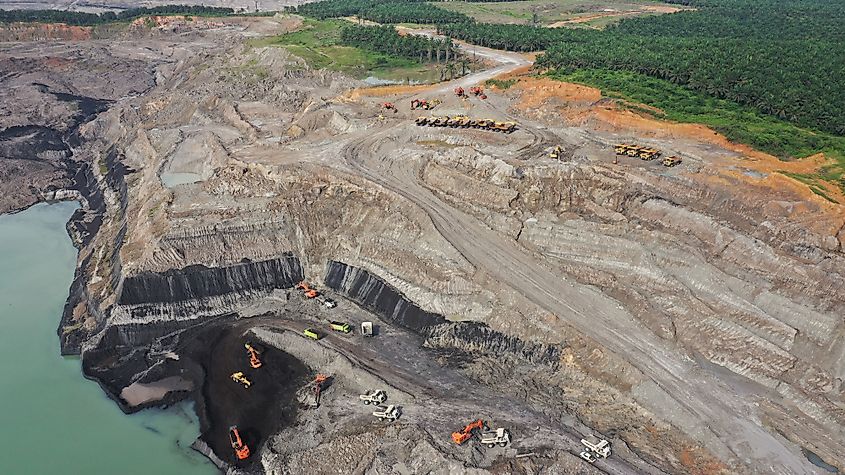
Mining is another important industry on the island of Borneo. Coal, for example, has been mined on the island for more than a century. The Malaysian states of Sabah and Sarawak alone hold 99% of Malaysia’s coal deposits. Gold has also been mined on the island for a long time. In 1995, one of the world’s richest gold deposits was discovered in northeast Borneo. Other mineral resources include silver, diamonds, bauxite, tin, and copper. Borneo, and Brunei in particular, also has a sizable oil and gas sector. In fact, Brunei is one of the biggest oil producers in Southeast Asia.











